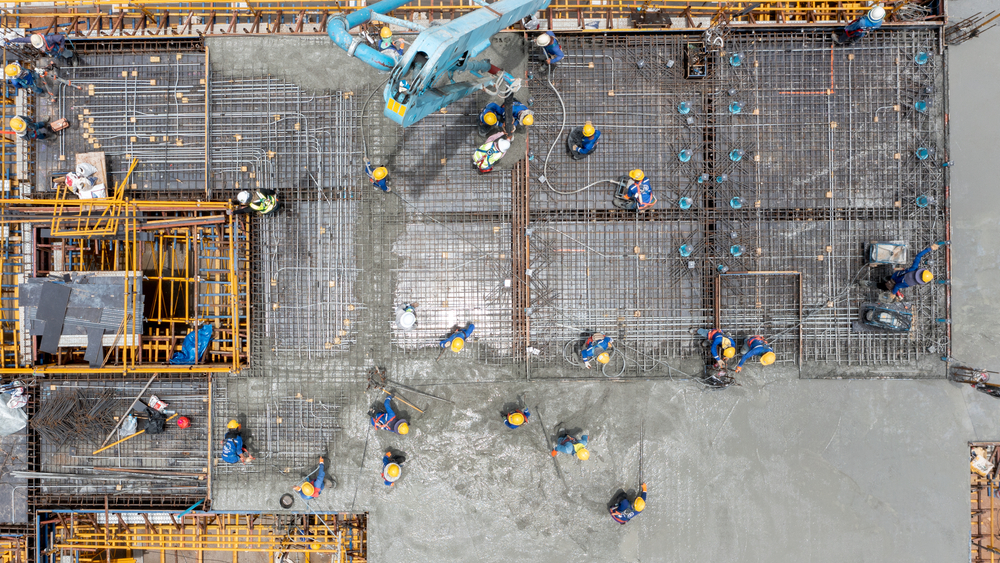
Erosion and Sediment Control in Construction
Erosion and Sediment Control in Construction
Construction activities often disturb soil, leading to erosion and sediment runoff that can harm surrounding ecosystems. Without proper management, this runoff can pollute waterways, clog drainage systems, and damage landscapes. That’s why erosion and sediment control is an essential part of sustainable construction site management.
By adopting effective erosion and sediment control strategies, developers can protect natural resources, comply with environmental regulations, and maintain project stability and safety.
Understanding Erosion and Sediment Control
Erosion is the process by which soil particles are displaced by wind, water, or human activity. Sediment control, on the other hand, focuses on preventing these displaced particles from leaving the construction site and contaminating nearby water bodies.
Together, erosion and sediment control measures form the backbone of environmentally responsible construction. They ensure that disturbed soil remains contained and that water runoff is clean and free from pollutants.
Why Erosion and Sediment Control Matters
Uncontrolled erosion can lead to significant environmental and economic consequences. Here’s why erosion and sediment control is crucial:
-
Prevents Water Pollution: Stops sediment and debris from entering rivers, lakes, and storm drains.
-
Preserves Topsoil: Maintains soil health for landscaping and vegetation.
-
Reduces Flood Risk: Prevents silt accumulation in drainage systems.
-
Ensures Regulatory Compliance: Meets environmental standards set by pollution control boards.
-
Supports Sustainability: Promotes eco-friendly construction and long-term site stability.
Effective erosion and sediment control safeguards both the environment and project outcomes.
Common Erosion and Sediment Control Techniques
Modern erosion and sediment control practices combine engineering, environmental, and landscaping strategies to minimize impact.
1. Silt Fences and Sediment Barriers
Silt fences made from geotextile fabric are installed along slopes or drainage paths to trap soil particles and prevent sediment runoff.
2. Mulching and Vegetative Cover
Applying mulch or planting grass helps stabilize exposed soil and reduce erosion caused by rainfall or wind.
3. Sediment Basins
Temporary basins or traps collect runoff water, allowing sediment to settle before it leaves the site — an essential sediment control method for large projects.
4. Erosion Control Blankets
Biodegradable mats protect soil on steep slopes and disturbed areas until vegetation grows, helping maintain sediment control.
5. Drainage Diversions
Constructing ditches or berms redirects stormwater flow, reducing soil displacement and improving site drainage.
6. Stabilized Entry/Exit Points
Gravel or concrete pads at site entrances prevent soil from being tracked onto public roads, a critical element of construction pollution control.
Erosion and Sediment Control Regulations in India
In India, sediment control is governed by environmental regulations designed to prevent soil degradation and water contamination. The Central Pollution Control Board (CPCB) and state-level boards mandate that construction projects implement pollution prevention measures such as silt fences, sediment traps, and stormwater management systems.
Additionally, projects under the Environmental Impact Assessment (EIA) process must include detailed erosion and sediment control plans to secure approvals. These practices align with India’s efforts under the National Water Policy to promote sustainable land and water use.
Benefits of Implementing Erosion and Sediment Control
Adopting sediment control measures offers multiple benefits for both developers and the environment:
-
Environmental Protection: Keeps water sources clean and ecosystems intact.
-
Reduced Project Delays: Prevents soil loss and damage to site infrastructure.
-
Cost Efficiency: Minimizes maintenance and restoration expenses.
-
Sustainability Compliance: Supports green construction practices and LEED certification.
-
Community Health: Reduces dust and pollution near residential zones.
Incorporating sediment control ensures smoother, cleaner, and safer construction operations.

Integrating Control Measures with Sustainable Construction
For long-term success, sediment control must be part of a larger sustainability framework. Combining it with waste management, water conservation, and low-emission construction equipment enhances environmental performance.
Using smart building technology and sensors can help monitor runoff patterns and weather data, enabling proactive adjustments on-site. This integrated approach supports climate-responsive design and better building performance overall.
Partner with AMS India for Sustainable Site Management
At AMS India, we specialize in sustainable site solutions, including sediment control. Our expert team designs and implements eco-friendly measures that reduce environmental impact, improve safety, and ensure full regulatory compliance.
From soil stabilization to pollution control and environmental impact mitigation, AMS India delivers end-to-end sustainable construction solutions tailored to every project’s needs.
Conclusion
Implementing sediment control is not just a regulatory requirement — it’s a commitment to environmental responsibility. By adopting proven techniques like silt fencing, mulching, and vegetative stabilization, construction companies can protect natural resources, reduce pollution, and promote long-term sustainability.
Incorporating these practices from the planning stage ensures that every project contributes positively to both development and the environment — building a greener, more resilient future for all.
Read more related articles to enhance your knowledge and make informed decisions
Cost-Effective Modular Construction: Fast, and Sustainable Building Solutions
Smart Modular Buildings: Innovative, Efficient, and Sustainable Construction








